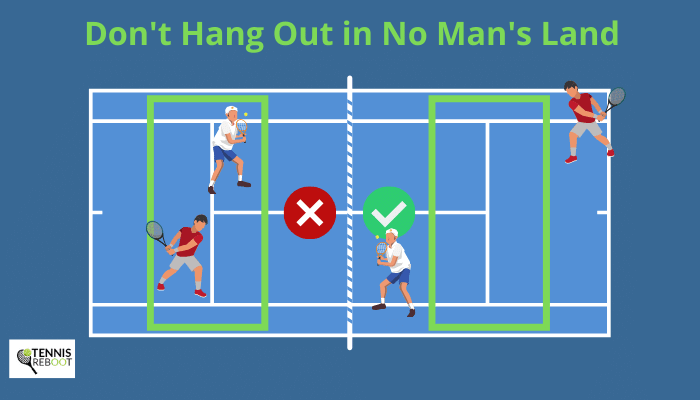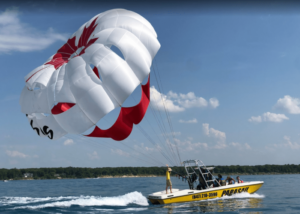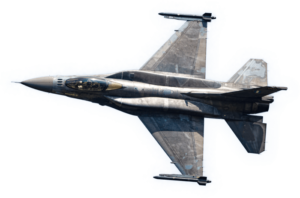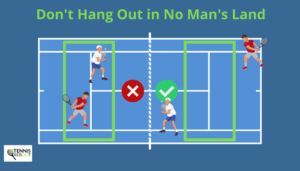
Doubles tennis strategies offer a unique blend of teamwork and individual skill, making the game a fascinating spectacle. As players work in tandem, their success hinges not just on their racket skills but also on effective positioning, communication, and understanding each other’s strengths.
By exploring various tactics, both on and off the court, players can elevate their game. From the roles each partner plays to the strategies borrowed from other sports, mastering these elements can lead to a significant advantage during matches.
Doubles Tennis Strategies

In doubles tennis, strategic positioning and effective communication between partners are essential for a successful match. Understanding each player’s role and maximizing their strengths can significantly enhance performance and increase the chances of victory.
Effective Positioning for Doubles Teams
Positioning on the court is critical in doubles. Teams can maximize their effectiveness by adopting specific formations and strategies based on their playing style and opponents. Ideal positioning allows players to cover the court efficiently, intercept shots, and create opportunities to win points.
- Close to the Net: Positioning one player near the net and the other at the baseline can create a formidable team dynamic. This setup allows for quick volleys and pressure on the opponents, forcing mistakes.
- Side by Side: Standing side by side at the net can be effective for intercepting volleys and controlling the pace of the game. It also enables easier communication and quick reactions to opponents’ shots.
- One Up, One Back: This formation is flexible and allows for greater coverage of the court. The player at the net can cut off angles while the back player can handle deeper shots, providing a balanced defense.
Importance of Communication Between Partners
Communication is the backbone of a successful doubles team. Effective dialogue ensures that both players are synchronized in their movements, strategies, and shot selections. Improving communication can lead to better teamwork and confidence during matches.
- Verbal Cues: Simple, clear phrases can be established for various situations, such as calling for the shot or indicating movement. Regular practice of these cues helps reinforce them during high-pressure moments.
- Non-Verbal Signals: Players can utilize hand signals or body language to indicate strategies without alerting opponents. This is particularly useful during serve-and-volley plays.
- Feedback and Support: Providing positive feedback and constructive suggestions after each point helps build trust and fosters a solid partnership. This can boost morale and improve on-court performance.
Roles of Each Player in a Doubles Match
Understanding the distinct roles of each player in a doubles team is key to maximizing their strengths and creating effective strategies. Each partner’s skill set can be utilized to cover the court and respond to opponents’ tactics efficiently.
- Net Player: This player takes charge of the net, focusing on volleying and intercepting shots. Strong reflexes and good positioning are essential for success in this role.
- Baseline Player: Typically more experienced in rallying, this player defends against deep shots and sets up plays for the net player. They should have a strong serve and consistency in groundstrokes.
- Strategist: One player should take the role of the strategist, making tactical decisions based on the opponents’ weaknesses. This involves analyzing the match flow and adjusting their play style accordingly.
Tactics from Other Sports
In the world of doubles tennis, lessons and tactics from other sports can significantly enhance gameplay. By drawing parallels to team sports and martial arts, players can adopt strategies that improve coordination, agility, and overall performance. Whether it’s the teamwork seen in soccer or the precision of martial arts, these principles can translate effectively onto the tennis court.One notable aspect of doubles tennis is the emphasis on teamwork.
Much like in team sports, communication and strategic positioning are vital. In sports such as basketball and soccer, players utilize formations and plays to create opportunities for success. These concepts can be adapted to tennis doubles, where positioning and movement are critical.
Strategies from Team Sports
Understanding how team sports approach strategy can provide valuable insights into doubles play. Consider the following strategies commonly recognized in team sports and how they apply to doubles tennis:
- Zone Defense: Similar to basketball, where a team defends specific areas, tennis teams can adopt a formation where one player covers the net while the other roams the baseline, maximizing coverage and minimizing gaps.
- Give-and-Go: This basketball tactic, where a player passes the ball and quickly moves to receive it back, can be adapted to create quick exchanges at the net, confusing opponents and creating openings.
- Switching Positions: In sports like volleyball, players often switch positions based on play. Doubles teams can benefit from a similar fluidity, allowing them to adapt to opponents’ shots and positioning dynamically.
Martial Arts Principles for Agility
Martial arts emphasize agility, balance, and responsiveness, which are equally essential in doubles tennis. By integrating martial arts principles, players can enhance their performance in various ways:
- Footwork Techniques: Martial arts training emphasizes precise footwork, helping players maintain balance and positioning on the court, allowing for quicker responses to shots.
- Mindfulness and Focus: The mental aspects of martial arts cultivate concentration, which can be beneficial for staying focused during high-pressure points in a match.
- Breathing Techniques: Learning to control breathing, as practiced in martial arts, can help players manage stress and maintain stamina throughout the match.
Coordination in Water Sports
Water sports, particularly rowing and synchronized swimming, offer lessons in coordination and teamwork that are directly applicable to doubles tennis. The synchronization required in these sports highlights the importance of teamwork and rhythm:
- Rhythmic Movement: Just as rowers coordinate their strokes, doubles partners should develop a rhythm in their play. This synchronization can lead to seamless transitions during rallies and effective shot placement.
- Communication Signals: In synchronized swimming, non-verbal cues are essential. Doubles partners should establish signals or patterns to indicate their intentions without alerting opponents.
- Collective Strategy: Much like teams in water sports devise strategies based on their strengths, doubles teams should analyze their skills and develop a cohesive game plan that plays to their advantages.
Advanced Techniques in Doubles

In the dynamic world of doubles tennis, mastering advanced techniques can significantly elevate your game. This guide delves into the essential skills of volleys and overheads, effective serving strategies, and the psychological facets of maintaining confidence under pressure. Each of these components plays a critical role in achieving success on the court, particularly in a cooperative format like doubles, where teamwork and strategy are paramount.
Use of Volleys and Overheads in Doubles
Volleys and overheads are crucial shots in doubles tennis that can decisively change the momentum of a match. The ability to execute these techniques effectively not only enhances individual performance but also complements your partner’s play style. To practice volleys:
Footwork drills
Quick lateral movements and positioning are vital. Set up cones and practice moving to each side while maintaining balance, focusing on your split-step before each volley.
Target practice
Use a wall or partner to volley back and forth, aiming for specific targets to improve precision and control.
Game scenarios
Simulate match conditions by alternating between offensive and defensive volleys, allowing you to adapt based on your partner’s positioning.For overheads:
Shadow swings
Practice your overhead motion without a ball to develop muscle memory. Focus on your grip, stance, and follow-through.
Ball toss drills
Work with a partner to feed balls that simulate different heights and angles, honing your timing and swing mechanics.
Conditioned games
Play points where only overheads can be used when the ball is above a certain height, which encourages proactive offensive play.
Serving Strategies and Placement
Effective serving strategies in doubles are fundamental for gaining an advantage over opponents. The placement and type of serve can dictate the pace and flow of the match.Consider these serving strategies:
Body serves
Aimed directly at the opponent’s body, this serve can jam them and create opportunities for the server and their partner to capitalize.
Wide serves
Serving wide forces the opponent to stretch, opening up the court for potential follow-up shots or volleys.
Kick serves
This serve bounces high, making it difficult for opponents to return aggressively, especially when aimed toward their weaker side.Incorporating these strategies requires practice in:
Serve placement drills
Use cones to target specific areas of the service box, enhancing accuracy under pressure.
Serve and volley practice
After serving, immediately move toward the net to practice following up on your serve, creating a seamless transition from offense to defense.
Psychological Aspects of Playing Doubles
The mental aspect of playing doubles is often overlooked but is equally vital as technical skills. Maintaining confidence under pressure can be the deciding factor in close matches.Key psychological strategies include:
Positive reinforcement
Encourage your partner and maintain open communication to build trust and reduce anxiety.
Focus on process over outcome
Concentrate on executing each shot rather than worrying about the score; this helps alleviate pressure.
Visualization techniques
Before matches, visualize successful plays and outcomes to boost confidence and readiness.Utilizing these strategies fosters a positive mindset that can withstand the rigors of competitive play, ensuring each player is mentally equipped to handle challenges effectively.
Summary
In summary, embracing effective doubles tennis strategies can transform a team’s performance and enhance the overall enjoyment of the game. By focusing on communication, positioning, and leveraging advanced techniques, players can build a strong partnership that thrives even under pressure.
FAQ Summary
What is the best positioning in doubles play?
Players should adopt a staggered formation, with one at the net and one at the baseline, to cover the court effectively.
How can partners improve communication?
Use specific calls and signals during play, practice together regularly, and discuss strategies off the court.
What are the key roles of each player in doubles?
Typically, one player focuses on offensive plays at the net while the other defends the baseline, but roles can vary based on individual strengths.
How do serving strategies differ in doubles?
Serving in doubles often involves targeting the weaker opponent or using placement to set up a quick point.
What psychological tips can help during matches?
Maintaining a positive mindset, staying focused on the game, and supporting your partner can greatly enhance performance.





